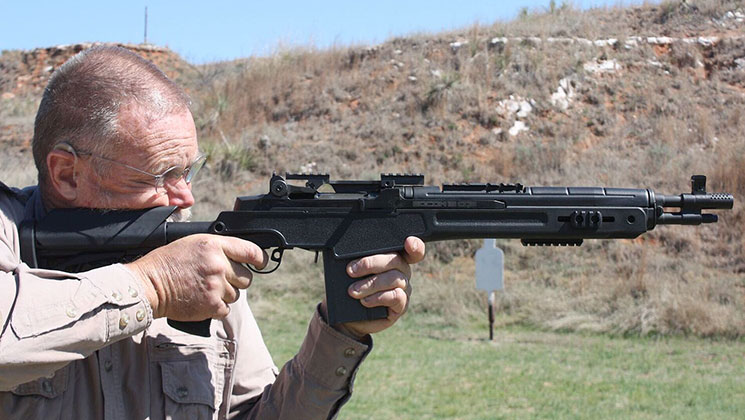
It is advertised as being optimal for Aimpoint optics, although most mounts attached to the factory accessory rail will still require a cheekrest in order to get the proper weld. It has an 18-inch (46 cm) barrel, a forward-mounted optical sight base, and a proprietary muzzle stabilizer. The Scout Squad is an M1A marketed toward law enforcement users. The National Match is a more basic model, while the Super Match is more customizable has additional features on some models such as a McMillan stock and a Douglas stainless steel barrel.

Two M1As are advertised as match rifles, the National Match M1A and the Super Match M1A. The Loaded models do not have the action glass bedded into the stock as do the National Match models.
M1A SOCOM CQB SCOPES FULL
had a Full Auto Department at their factory in Illinois. Up until May 1986, Springfield Armory, Inc. were the two companies that produced select fire M14 type rifles for civilian ownership. Most of the M1A rifles manufactured since 1971 were made for the commercial market, and thus were only capable of semi-automatic fire. The muzzle brake reduces climb of the barrel, making the rifle easier to control. As a result, Springfield Armory designed a muzzle brake, which they installed in place of the standard flash suppressor on all models that were sold in California. The California Assault Weapons Ban prohibits flash suppressors on all semi-automatic rifles capable of accepting a detachable magazine. Since the bayonet lug is attached to the flash suppressor, "post-ban" rifles can easily be fitted with a bayonet lug by fitting a pre-ban flash suppressor. Although the 1994 law expired in September 2004, making bayonet lugs on newly manufactured firearms legal again (in most states), Springfield Armory has not restored that feature. Once the Federal Assault Weapons Ban of 1994 was passed prohibiting the manufacture of firearms with bayonet lugs (among other features), the M1A no longer shipped with a bayonet lug.

Springfield Armory has also omitted the "7.62-MM" caliber designator on the M1A receiver since 1991. Until around the late 1990s, the M1A produced by Springfield Armory retained the cutout in the rear right of the stock for the selector switch found on the M14. The military M14 receivers were manufactured using the drop forge process, which is more complicated and more expensive. M1A receivers are made from precision investment cast AISI 8620 alloy steel. Selector switch cutout in M1A stock manufactured in 1997 Early M1A rifles were built with surplus G.I. "M1A" is a proprietary name for Springfield Armory's M14-pattern rifle. The Springfield Armory M1A is a semi-automatic rifle made by Springfield Armory, Inc., beginning in 1974, based on the M14 rifle, for the civilian and law enforcement markets in the United States. National Match front blade, match-grade hooded aperture with one-half minute adj. Standard, Loaded, National Match, Super Match, M21, M25, SOCOM 16, Scout Squad, SOCOM II, Tanker Springfield Armory M1A with bipod and M6 bayonet



 0 kommentar(er)
0 kommentar(er)
